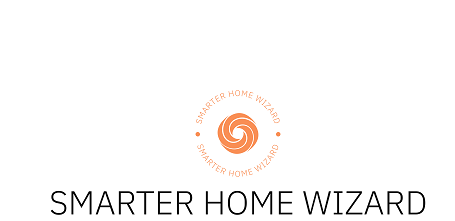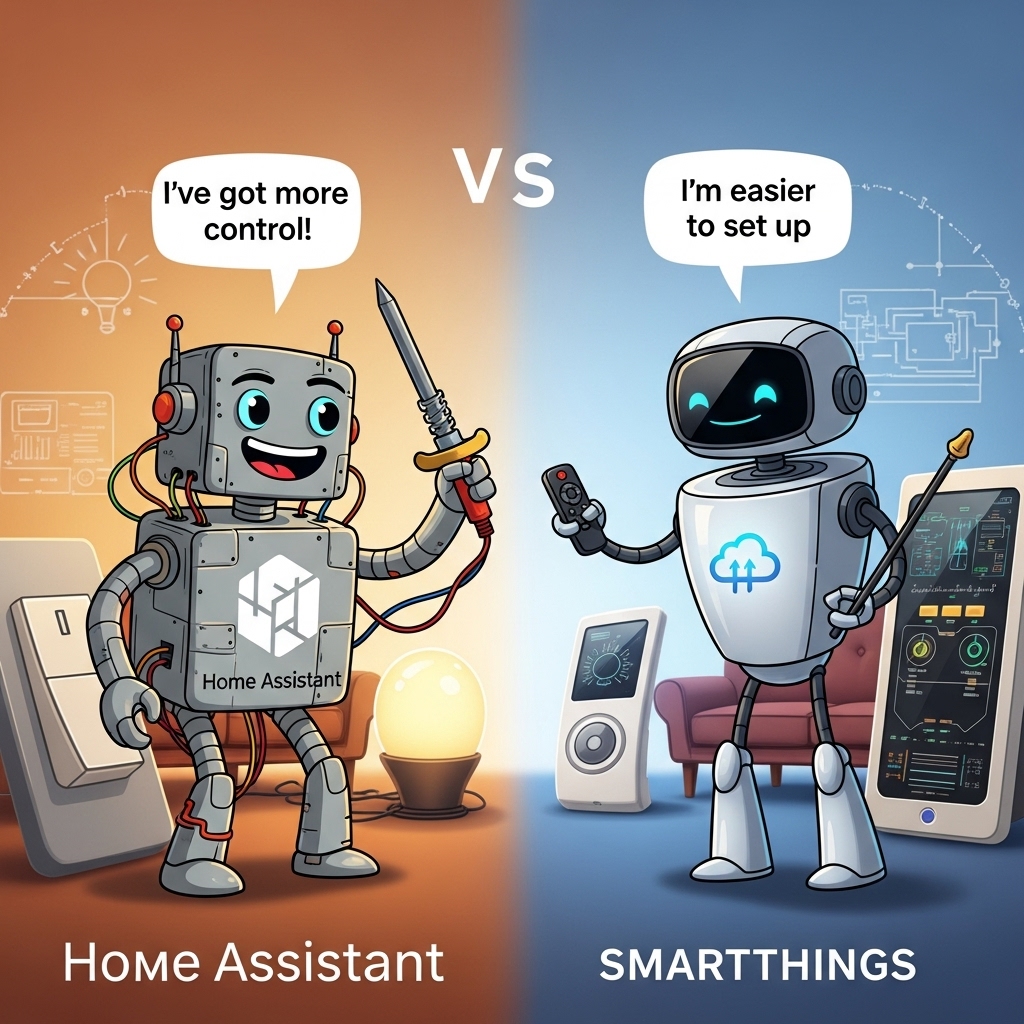Choosing the right smart home platform can be challenging, especially with so many options available. Two of the most popular platforms are Home Assistant and SmartThings, each offering unique features and capabilities. 🏠 Home Assistant is an open-source platform known for its flexibility, extensive integrations, and powerful automation capabilities. It allows advanced users to customize nearly every aspect of their smart home setup, from lighting and climate control to security and media devices. On the other hand, SmartThings offers a more user-friendly experience with a polished app, cloud-based automations, and seamless integration with many consumer devices.
Introduction
Choosing the right smart home platform can be overwhelming with so many options available today. Two of the most popular choices are Home Assistant and SmartThings, each offering unique advantages and suited to different types of users. 🤖
Home Assistant is an open-source platform that prioritizes flexibility and customization. It supports hundreds of integrations, advanced automations, and local control, allowing tech-savvy users to create highly personalized smart home setups. From controlling lights, climate, and security devices to orchestrating complex multi-device routines, Home Assistant gives you full control over your smart environment. ⚡
On the other hand, SmartThings focuses on simplicity and convenience. Its cloud-based platform offers an intuitive app, easy device setup, and ready-to-use automations. It’s perfect for users who prefer a straightforward experience without diving into technical configurations. 📱✨
When comparing Home Assistant vs SmartThings, consider key factors such as:
- 🔌 Device compatibility: Home Assistant supports a wider range of devices and protocols, while SmartThings works seamlessly with popular consumer products.
- 🛠️ Automation flexibility: Home Assistant allows advanced scripting and customization; SmartThings focuses on easy-to-use routines.
- 🌐 Cloud vs local control: Home Assistant can run entirely locally for faster response and privacy, whereas SmartThings relies mainly on cloud services.
- 📱 User experience: SmartThings offers a polished, beginner-friendly app, while Home Assistant may require more technical knowledge.
In this guide, we’ll dive deeper into the strengths and weaknesses of both platforms to help you decide which one fits your smart home lifestyle best. By the end, you’ll understand whether Home Assistant or SmartThings aligns with your automation goals, technical comfort, and device ecosystem. 🔍🏡
Main
🔍 Overview
When building a smart home, one of the biggest decisions you’ll face is choosing the right automation platform. Two of the most popular options—Home Assistant and SmartThings—offer very different experiences. While Home Assistant is loved for its open-source power and endless customization, SmartThings appeals to users seeking simplicity and seamless integration. Let’s explore how they compare in features, usability, and performance. ⚙️
🤖 What Is Home Assistant?
Home Assistant is an open-source home automation platform designed for enthusiasts who want full control over their devices and data. It runs locally, which means most automations work even if the internet is down. With a strong community and constant updates, it supports a vast ecosystem of integrations, from Zigbee and Z-Wave to MQTT and REST APIs.
⭐ Key Features
- Local-first control with privacy and low latency
- Over 1,000 official and community-built integrations
- Advanced automation editor and YAML scripting
- Support for Zigbee, Z-Wave, and MQTT devices
- Powerful dashboards with custom Lovelace UI
✅ Pros
- 🏡 Fully local operation — fast and private
- ⚙️ Unlimited automation possibilities
- 🔌 Works with almost any smart device or protocol
- 🧠 Active open-source community with frequent updates
- 🎨 Highly customizable interface and dashboards
❌ Cons
- 🧩 Steeper learning curve for beginners
- 🧰 Requires manual setup and maintenance
- ☁️ Cloud integrations sometimes need extra configuration
- 💻 Not ideal for users who prefer plug-and-play simplicity
📱 What Is SmartThings?
SmartThings, developed by Samsung, is a cloud-based smart home platform designed to make automation simple and accessible. It’s perfect for those who want to connect and control devices easily using a polished mobile app and voice assistants like Alexa or Google Assistant. With support for Matter and Thread, SmartThings is evolving toward a more open ecosystem.
⭐ Key Features
- Simple cloud-based automation setup
- Native integration with Samsung and popular brands
- Compatible with Matter, Thread, and Zigbee devices
- Mobile app for Android and iOS
- SmartThings Station and Hub for multi-protocol support
✅ Pros
- 📲 Very user-friendly interface
- ⚡ Easy device pairing and automation creation
- 🌐 Works with major brands like Philips, Arlo, and Ecobee
- 💬 Seamless integration with Alexa and Google Assistant
- 🔄 Regular updates and official manufacturer support
❌ Cons
- ☁️ Reliance on the cloud for most operations
- ⚙️ Limited flexibility for advanced automations
- 🔒 Less customization compared to Home Assistant
- 🕒 Possible latency when internet connection is slow
⚖️ Home Assistant vs SmartThings: Head-to-Head
- Ease of Use: SmartThings wins for beginners; Home Assistant for power users.
- Automation Power: Home Assistant allows deep customization with YAML or UI automations.
- Privacy: Home Assistant is local-first, giving you full data control.
- Device Support: Home Assistant integrates more protocols; SmartThings is better for mainstream brands.
- Reliability: Local automations on Home Assistant work even offline.
💡 Final Thoughts
Both Home Assistant and SmartThings are excellent smart home platforms—but they serve different audiences. If you love tweaking, self-hosting, and total control, Home Assistant is unbeatable. But if you value simplicity, quick setup, and wide manufacturer support, SmartThings is the way to go. 🌟
Ultimately, your choice depends on your goals: do you want to build your smart home from the ground up, or simply use one that just works? Either way, both platforms bring intelligence and convenience to your connected living space. 🏡✨
Table of contents
Editorial Process
Warning
Tags






